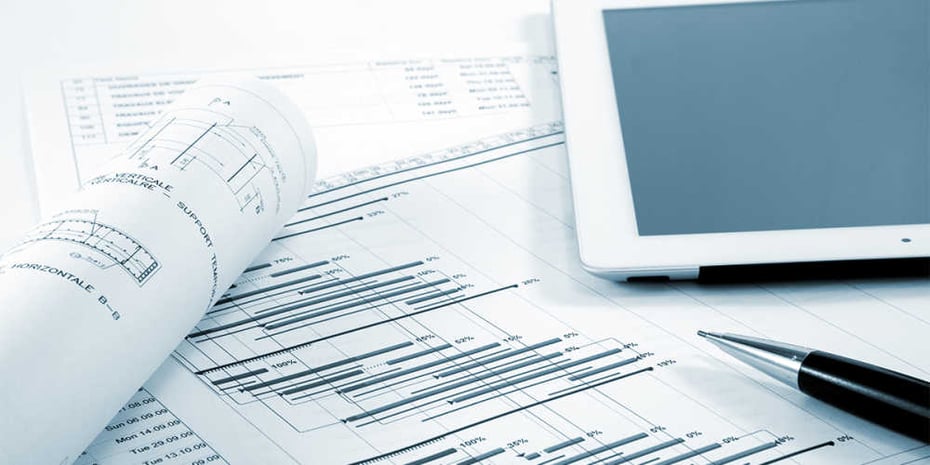From Disorder to Control: Harnessing the Possible of Construction Document Management
From Disorder to Control: Harnessing the Possible of Construction Document Management
Blog Article
Optimizing Task Collaboration: Architect's Best Practices in Construction File Administration
In the intricate world of architectural projects, the effective management of building and construction papers stands as a foundation for success. In the middle of this intricacy lies a crucial concern: just how can designers improve collaboration procedures to enhance task results?
Leveraging Cloud-Based Platforms
Leveraging cloud-based systems is a fundamental approach for modern engineers in optimizing construction document management procedures. By transitioning from traditional paper-based systems to shadow solutions, designers can simplify collaboration, enhance paper accessibility, and enhance general task effectiveness. Cloud-based systems offer designers the capability to store, share, and update construction documents in real-time, ensuring that all staff member have access to the most existing details despite their place. This availability promotes seamless interaction and sychronisation amongst job stakeholders, bring about less errors and delays in the building process.
In addition, cloud-based platforms give a secure setting for storing delicate project details, providing security, regular back-ups, and user approval settings to protect data honesty. Designers can additionally gain from the scalability of cloud solutions, permitting them to change storage ability and performance based on project needs. Generally, leveraging cloud-based platforms empowers engineers to maximize their building and construction paper administration procedures, driving better cooperation, effectiveness, and success in their jobs.
Executing Variation Control Solution
Having actually established the benefits of cloud-based systems in building file management, designers can now enhance their record control processes by implementing Variation Control Systems. Variation Control Solution (VCS) are necessary devices that track changes in records, making sure that team participants are always functioning with the newest and most exact info. By applying VCS, architects can preserve a centralized repository where all job files are kept, making it possible for seamless partnership while minimizing the threat of mistakes and variation disputes.
This function is especially valuable in building tasks where layout versions and adjustments are usual. This openness not just enhances accountability yet also aids in solving disagreements or disparities that may emerge during the task lifecycle.
Establishing Interaction Methods
To ensure effective and effective task sychronisation, engineers should develop clear and robust interaction protocols within their building paper monitoring processes. This platform could be a project monitoring software program, e-mail threads, or cloud-based storage services.
Furthermore, communication protocols should also consist of standards on just how to manage disputes, modification orders, and urgent issues that may occur during the task lifecycle. Developing an organized technique to communication makes sure that all stakeholders are on the same page, advertises openness, and inevitably adds to the effective conclusion of the building and construction task.
Utilizing BIM Software for Coordination
BIM software plays a critical duty in improving sychronisation among task team members in the building and construction sector. Building Information Modeling (BIM) facilitates cooperation by supplying a centralized system where engineers, engineers, contractors, and various other stakeholders can interact in a worked with way. Through BIM software, job participants can access and upgrade a common design that contains thorough details regarding the building style, construction elements, and project routines.

Moreover, BIM software program enables real-time collaboration and communication among team participants, no matter their physical area. Via cloud-based BIM systems, task stakeholders can access the most recent task details, track modifications, and make notified decisions quickly. In general, leveraging BIM software for control improves job effectiveness, productivity, and ultimately leads to effective job results.
Ensuring Data Protection and Compliance
In the world of building record administration, safeguarding information integrity and making sure regulatory conformity are paramount considerations for architects and various other project stakeholders. Engineers should apply robust safety measures to secure delicate project info from unapproved access or violations. Making use of safe cloud storage space services with security protocols and gain access to controls can aid alleviate threats related to information burglary or loss. Consistently updating software application and systems, performing safety and security audits, and giving staff training on data security ideal practices are necessary actions in maintaining a safe setting for building document administration.

Conclusion
Finally, engineers can maximize job cooperation in building review file monitoring by leveraging cloud-based systems, carrying out version control systems, establishing interaction procedures, using BIM software for control, and guaranteeing information safety and security and compliance. These finest practices assist improve the building and construction process, boost communication amongst job stakeholders, and enhance effectiveness in task shipment. By adhering to these guidelines, engineers can efficiently handle construction records and promote successful project end results.
Through BIM software program, job individuals can access and update a shared version that contains thorough information concerning the building layout, construction elements, and task timetables.
Through cloud-based BIM platforms, job stakeholders can access the most current job details, track changes, and make educated choices quickly - construction document management. Generally, leveraging BIM software program for sychronisation improves task performance, performance, and ultimately leads to successful job end results
In you could look here verdict, architects can enhance job collaboration in building and construction file monitoring by leveraging cloud-based platforms, executing variation control systems, developing interaction methods, using BIM software program for coordination, and making sure information safety and security and conformity. These ideal practices help improve the building procedure, boost communication among job stakeholders, and improve effectiveness in task distribution.
Report this page